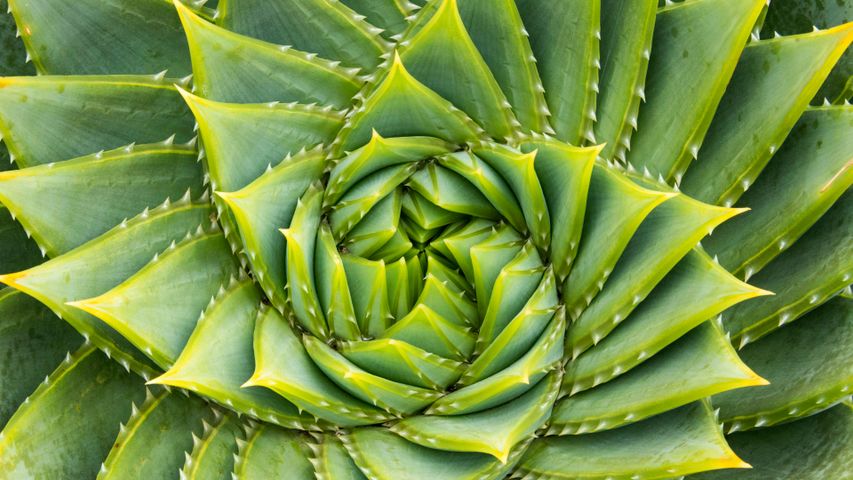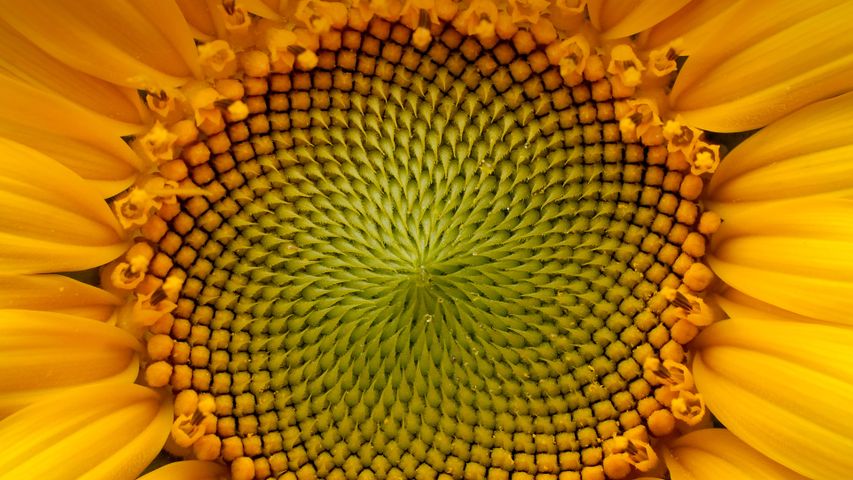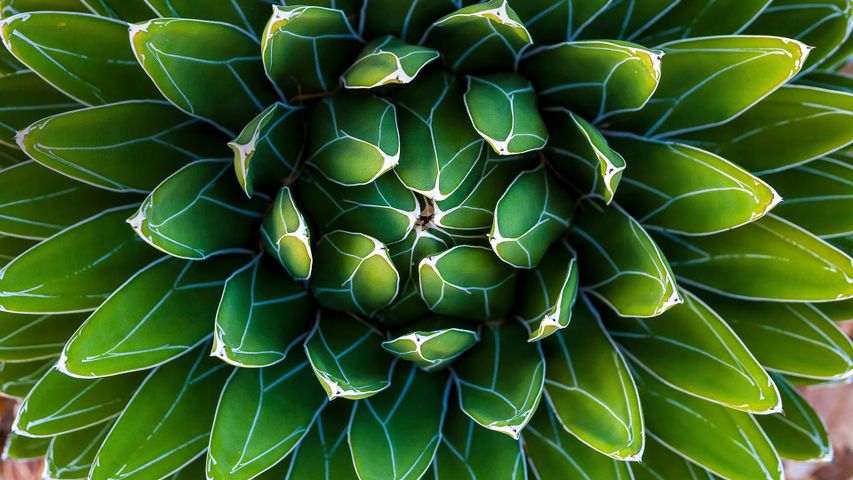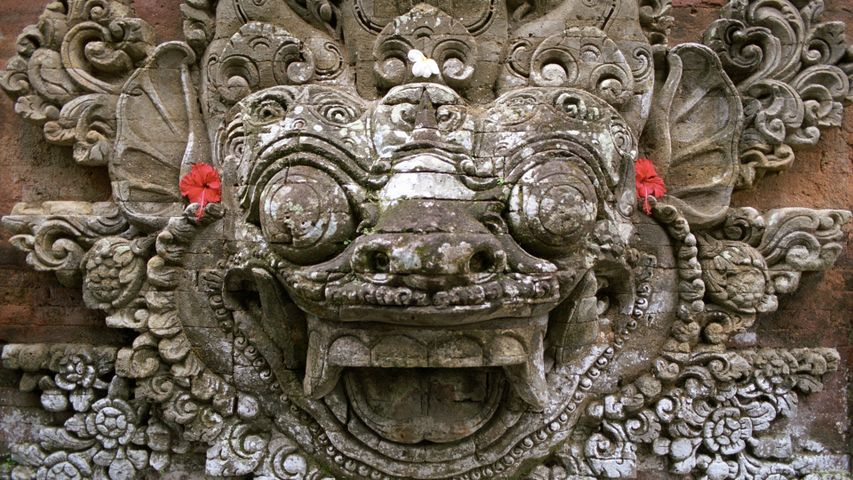Cross-section of a fossilized ammonite shell
© Marianna Armata/Getty Image
Fibonacci Day
It's a bit of a fib that Fibonacci, the 13th-century Italian math whiz, was the first to sketch out a number sequence in which each number is the sum of the two preceding numbers: 0, 1, 1, 2, 3, 5, 8, 13, and so on forever. In fact, scholars in India described the sequence centuries before Fibonacci, and they probably weren't the first to figure it out either. But in any case, each November 23—that is, 11/23—we celebrate the infinite series known as the Fibonacci sequence.
So what does this have to do with our image of a fossilized shell? Try to picture the Fibonacci sequence on a graph. If you properly arrange squares of the areas 1x1, 1x1, 2x2, 3x3, 5x5, 8x8, etc., on graphing paper, a curved line drawn through each square will form a perfect expanding spiral not unlike the ammonite fossil cross-sectioned here. Not every spiral in nature expresses a perfect Fibonacci sequence, but nature does seem to have a thing for spirals. And in that sense the Fibonacci sequence seems especially elegant.
Related Images
Today on Bing

Spiral aloe, Kangaroo Island, Australia

Flint corn

Sunflower

Old Town of Bern, Switzerland


 'The Spirit of Electricity' by Raoul Dufy, Museum of Modern Art, Paris, France
'The Spirit of Electricity' by Raoul Dufy, Museum of Modern Art, Paris, France
 Paper flags strung over a street in San Miguel de Allende, Mexico
Paper flags strung over a street in San Miguel de Allende, Mexico
 Aerial view of glacial rivers in Iceland
Aerial view of glacial rivers in Iceland
 Mid-Autumn Festival in Gardens by the Bay, Singapore
Mid-Autumn Festival in Gardens by the Bay, Singapore
 'Power of the Titans' mural by Andrei Krautsou, North Kansas City, Missouri
'Power of the Titans' mural by Andrei Krautsou, North Kansas City, Missouri
 Roller coaster in Nagashima Spa Land, Mie prefecture, Japan
Roller coaster in Nagashima Spa Land, Mie prefecture, Japan
 Floating market, Kaptai Lake, Rangamati, Bangladesh
Floating market, Kaptai Lake, Rangamati, Bangladesh
 Stone carving at a temple in Ubud, Bali, Indonesia
Stone carving at a temple in Ubud, Bali, Indonesia